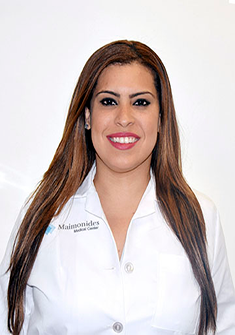Article
Study identifies indicators of TP biopsy complications, explores role of antibiotic prophylaxis
Author(s):
A study presented at the 2021 Society of Urologic Oncology Annual Meeting identified prostate size, procedure length, and administration of prophylactic antibiotics as factors associated with transperineal (TP) biopsy complications.1
Specifically, the researchers found that the likelihood of complications following TP biopsy were higher in patients who had large prostates, longer procedure times, and did not receive prophylactic antibiotics. Factors that were not significantly associated with the risk of post-biopsy complications included age, PSA level, comorbidities, biopsy setting, and fusion versus systemic biopsy.
Beyond interpreting the significance of these various factors, the researchers also determined that TP biopsy can be used to lower the risk of infectious complications even if antibiotic prophylaxis is not used.
Mariela R. Martinez, MD

“Transrectal prostate biopsy (TRUS biopsy) leads to significant morbidity and mortality with a 7% rate of complications and a 0.3-3.1% risk of sepsis, including hospitalization and even death,” lead author Mariela R. Martinez, MD, MS, Division of Urology, Maimonides Medical Center, said when explaining the background of the study.
“TP biopsy offers an alternative biopsy approachthat avoids the rectal floor and therefore has an overall infectious complication rate of 0-1%. Due to the low rate of complications associated with TP biopsy, the use of antibiotic prophylaxis for this type of biopsy is controversial,” added Martinez.
Accordingly, Martinez et al undertook this research to evaluate factors that may affect the rate of infectious complications following TP biopsy. The retrospective analysis reviewed medical records for patients who received TP biopsy between February 2018 and September 2020.
“TP biopsies were performed by using the Precision Point device and a 1% lidocaine block extending from the perineal skin to the prostatic apex,” said Martinez.
The decision on whether or not to use preoperative antibiotics was based on surgeon preference.
“Abstracted variables included age, BMI, comorbidities, pre-biopsy PSA and PSA density, prostate volume, type of anesthesia (local, sedation, or general anesthesia), location of procedure (ambulatory vs operating room), duration of procedure, and pre-procedural antibiotics given,” said Martinez.
Overall, the investigators identified and assessed medical records for 372 patients. Of these patients, 86% (n = 321) received prophylactic antibiotics and 14% (n = 51) did not receive the treatment.
The average patient age at baseline was 64.99 years (range, 41-87) and the average BMI was 28.07 (range, 17-42). The average PSA at baseline was 8.59 ng/mL and the average PSA density was 0.20. The average prostate volume was 48.83 grams (range, 13-220).
Of the biopsies conducted, 298 were performed in an office under local anesthesia and 67 were performed in an operating room under general anesthesia.
Across the study population, 40 patients (10.8%) developed complications. Among the 298 patients biopsied in-office, 29 (9.7%) had complications and among the 67 patients biopsied in an operating room, 11 (16.4%) had complications.
Among all biopsied patients, 24 (6.5%) experienced mild hematuria, 6 (1.6%) had urinary retention, and 3 (0.8%) had infectious complications. The infectious complications included 2 (0.5%) patients with sepsis/bacteremia requiring IV antibiotics and 1 (0.3%) patient with a urinary tract infection; none of these patients had received prophylactic antibiotics.
“Despite minimal use of prophylactic antibiotics, TP biopsy led to lower rates of sepsis (0.5%) compared to TRUS biopsy (4%) at our institution,” said Martinez.
Martinez explained that the rates of post TP biopsy complications were higher in patients with large prostate grands (>50 gm). Among the 91 men for whom the available records showed a prostate gland >50 gm, 17 (18.7%) had complications. Among the 146 patients for whom available data showed a prostate gland <50 gm, 12 (8.2%) had complications.
“There was a significant difference in procedure duration between patients with or without post TP biopsy complications (P = .002),” said Martinez. The average procedures times for patients with and without complications was 25 versus 18.64 minutes, respectively.
In her concluding remarks, Martinez said, “Patients who experienced post-TP biopsy complications had larger prostate volumes, longer procedure times, and were less likely to have received prophylactic antibiotics. Men with larger prostates or with procedure times longer than 25 minutes should be considered to receive antibiotic prophylaxis prior to TP biopsy.”
Reference
1. Martinez MR, Andreas D, Nyman L et al. Transperineal biopsy complications and the role of antibiotic prophylaxis. 2021 Society of Urologic Oncology Annual Meeting; December 1-3, Orlando, Florida. Abstract 197.
Newsletter
Stay current with the latest urology news and practice-changing insights — sign up now for the essential updates every urologist needs.

















